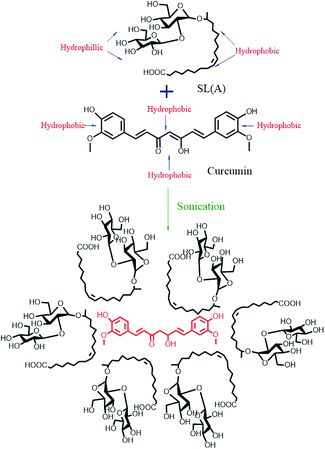 Open Access Article
Open Access ArticleCreative Commons Attribution 3.0 Unported Licence
Correction: From micron to nano-curcumin by sophorolipid co-processing: highly enhanced bioavailability, fluorescence, and anti-cancer efficacy
Pradeep Kumar
Singh
ab,
Kirtee
Wani
c,
Ruchika
Kaul-Ghanekar
c,
Asmita
Prabhune
*b and
Satishchandra
Ogale
*a
aPhysical and Materials Chemistry Division, National Chemical Laboratory (NCL), Council of Scientific and Industrial Research (CSIR), Dr Homi Bhabha Road, Pashan, Pune 411008, India. E-mail: sb.ogale@ncl.res.in
bBiochemical Sciences Division, National Chemical Laboratory (NCL), Council of Scientific and Industrial Research (CSIR), Dr Homi Bhabha Road, Pashan, Pune 411008, India. E-mail: aa.prabhune@ncl.res.in
cCell and Translational Research Lab, Interactive Research School for Health Affairs (IRSHA), Bharati Vidyapeeth Deemed University, Pune, India
First published on 25th February 2015
Abstract
Correction for ‘From micron to nano-curcumin by sophorolipid co-processing: highly enhanced bioavailability, fluorescence, and anti-cancer efficacy’ by Pradeep Kumar Singh et al., RSC Adv., 2014, 4, 60334–60341.
There are errors in the structures shown in Fig. 1 of the paper. The correct Fig. 1 is shown below.
The Royal Society of Chemistry apologises for these errors and any consequent inconvenience to authors and readers.
| This journal is © The Royal Society of Chemistry 2015 |

